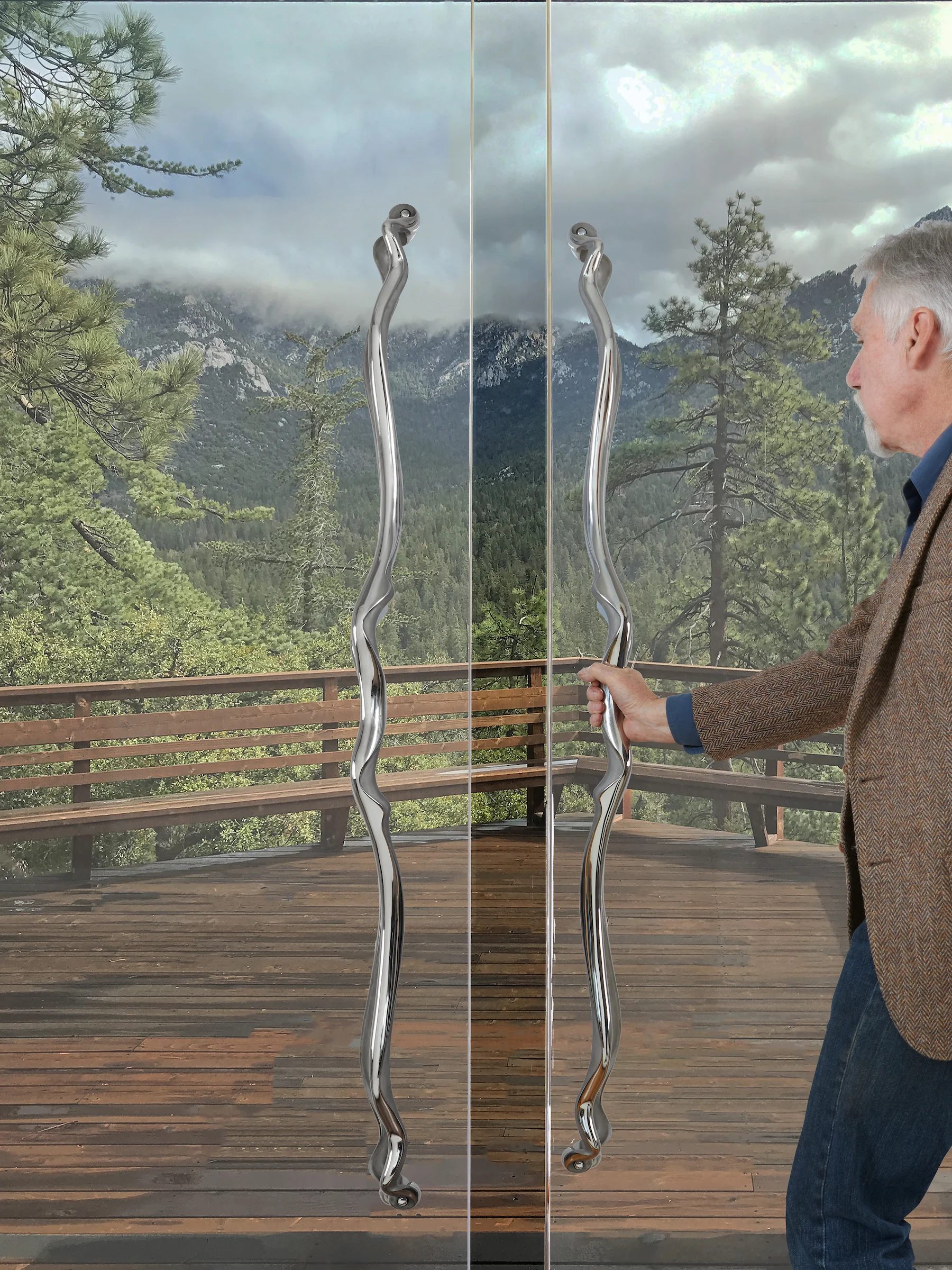A recent order prompted a return to the light box to see if we could photograph the luster of brushed rather than polished stainless steel. The lightbox had to be reconstructed to fit the 35” length of the Ergo Epic handle and even then, it was a very tight fit. The Ergo grip was photographed on a golden satin fabric using a Canon ESO Rebel with diffuse light created from overhead rows of LED light cells. The walls of the box are covered in a reflective foil to focus the light on the object and the floor and back wall are usually covered with a black or white backdrop.
How to Brush Stainless Steel
1. Angle grinder with a blade attachment is used to cut off any gates left from the casting stage.
2. Angle grinder using a very coarse grit disk that removes any major surface imperfection. This sometimes will reveal a small crater or void caused by an air bubble that occurred during casting which will need to be filled with steel weld before going further.
3. A handheld burnisher with an 80 grit sanding drum is next applied to begin buffing and refining the surface.
4. A second burnisher machine is used with a dual grit scotch-brite sandpaper drum with successively finer grit drums.
5. The final burnishing is done by hand with scotch-brite pads.
6. Lastly the piece is passivated.
Passivation
316 Stainless steel is known for its rust resistance so what is oxidation and why is passivation necessary? 316 stainless steel is an alloy comprised of iron, chromium, nickel, molybdenum, and carbon. Chromium reacts to oxygen in the air and this oxidation process creates a protective layer on the surface of the stainless steel that acts as a barrier to corrosive forces like salt air. It is the iron component in metal that rusts and while 316 develops a protective coat, during the burnishing process contaminants can attach to the surface. Hence the final stage is to passivate the piece by immersing it in a bath of citric acid solution which strips any iron contaminants from the surface and bonds with the iron elements to neutralize them and prevent future corrosion.







